August-September is the time for harvesting and eating fresh blackberries. Many will agree that its fruits become especially tasty if you tear them straight from the bunch, making their way between tall bushes. If the sweet tooth will learn the useful properties of the blackberry, then you can rest assured, its appetite will grow twice.
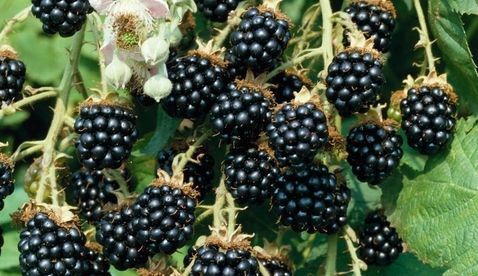
Meet the blackberry
Ripe blackberry berries outwardly resemble black raspberries. They also consist of individual glossy drupes and are collected in clusters. However, there are differences between black raspberries and blackberries.
In order to ascertain the origin of the berry, it is necessary to disrupt it. Malinka inside will be hollow, and her twin with a white core. Below, the photo shows a blackberry with a mature peduncle that left the bush along with the drupe.
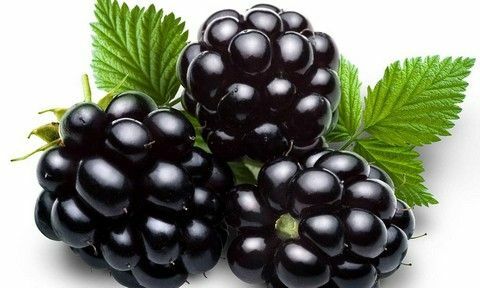
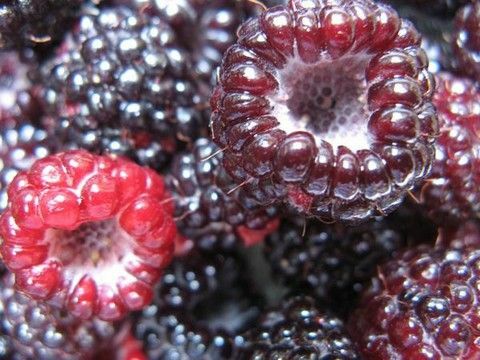
On some blackberry varieties, one can observe a blue raid that does not affect the taste qualities, but allows it to be recognizable against the background of other wild and cultivated species:
- bushy;
- ordinary;
- giant;
- early;
- split blackberry.
In all of the listed varieties, not only the fruit is appreciated, but also the leaves. They are often used for therapeutic purposes. All parts of the bushes are suitable for eating, and for outdoor use( for example, in the form of cosmetic masks or lotions).The presence of a whole complex of vitamins, important microelements in the blackberry makes the product indispensable in the kitchen, as well as in the home medicine cabinet. First of all, the use of blackberry for a person consists in a sufficient number of vitamins: A( 0.017 mg), B1-B3, E( 1.2 mg), C( 15 mg) and PP.In addition, the fruits contain about 0.95% sucrose, 3.16% glucose, 3.14% fructose, which are natural sugars and have a significant effect on the metabolism in the human body.
It is certainly worth mentioning apple, tartaric, citric acid and its other kinds contained in berries. And also it is necessary to designate the vital organic metals: potassium( 208 mg), phosphorus( 32 mg), calcium( 30 mg) and magnesium( 29 mg).
Let's talk about berries
Fresh fruits, of course, are considered the most useful. After all, they are not subjected to heat treatment, and therefore, do not lose vitamins and trace elements. But! Having eaten fruits in summer, you can still avoid avitaminosis by spring. So, we need to think about what can be done from blackberries for the winter, while preserving its useful properties.
Attention! Among the many recipes in the first place, pay attention to those based on a fresh product. For example, a blackberry, grated with sugar.
Here is a simple recipe: One part of unwashed( !) Fruit carefully rub with two parts of sugar. Stuff the puree over sterilized jars, close the lid tightly, then store it in a cool dark place.
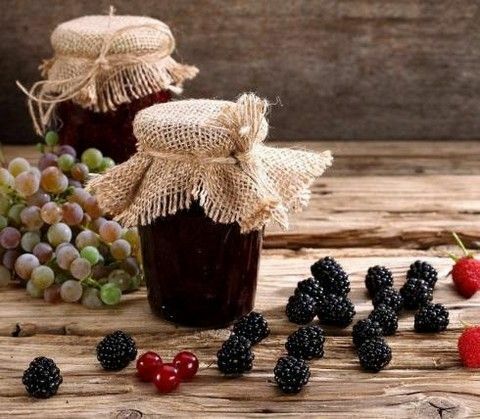
To preserve the valuable qualities of a berry, you can simply freeze it!
If the harvest allows you to save not only your pantry, but also the neighbor's niche, then safely proceed to the canning of the collection, the preparation of syrups, jams, jam and other preserves. However, remember that in this case, some useful properties of the blackberry will be lost( vitamins at high temperatures are destroyed).
Regular consumption of this berry allows a person:
- to strengthen immunity;
- improve the metabolism;
- normalize the functioning of the intestine;
- to prevent the occurrence of malignant tumors;
- relieve symptoms of ARI;
- strengthen small vessels;
- to improve brain activity and memory;
- relieve inflammation of the joints.
Let's find the application of the stem and leaves
It turns out that not only the fruits of a plant, but also its other parts are useful for a person. Young shoots of stalks and leaves collected in early spring are often added to salads, and in dried form they are used for making tea or tinctures. Ready fermented tea can be bought at the pharmacy, and you can do it yourself. In this case, the leaves should be dried not in the sun, but in a shaded place.
So what exactly is the benefit and harm of the blackberry leaves? Let's conduct a detailed study.
Black tea is a natural antioxidant
It turns out that phenolic compounds found in leaves have antioxidant properties and are toxic to cancer cells. Drink tea from blackberries, get rid of free radicals, that is, get younger by the day, and by the hour!
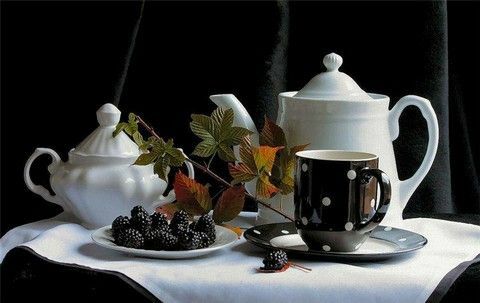
Anti-inflammatory effect
Ruby leaf contains coffee, ferulic and gallic acid, which are known for their anti-inflammatory properties. Of course, it will be difficult to feel the changes in the brain, but it is quite possible to feel relief from pneumonia or the gastrointestinal tract. Tannins and glucose contained in this part of the plant have a wound healing and analgesic effect.
Antihypertensive effect
Blackberry leaves contain special flavonoids( rutin, quercetin, kaempferol), which have a number of beneficial properties for the circulatory system. They are able to reduce blood pressure, due to a decrease in the permeability of capillaries, and also effective against other disorders of blood vessels.
Astringent effect
Tannins found in leaves give the plant astringent properties. This allows us to understand what else is useful for a blackberry man. External it is used to treat acne, burns or scars. Rinsing the mouth with infusions relieves sore throats, cures ulcers on the mucosa or reduces the bleeding of the gums. Taking tinctures inside facilitates the symptoms of diarrhea, manifestations of dysentery.
Important! Blackberries can cause allergies. A frequent use of tinctures or their acceptance in large quantities can lead to stomach upset, nausea and even vomiting. On this, in fact, the harm of blackberries for the body ends, but in everything else its fruits are only useful and nutritious.
By the way, a few words about nutrition. Like any other berry, a blackberry is considered a low-calorie product( 31 cal / 100g).It can be safely included in the menu of any diet.
On how to choose the right blackberry, store it, use it in recipes, you can see the video below.
So, run after the blackberry!
